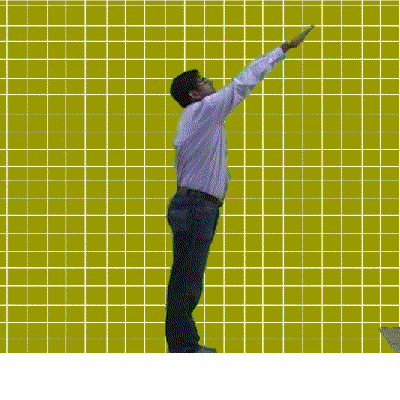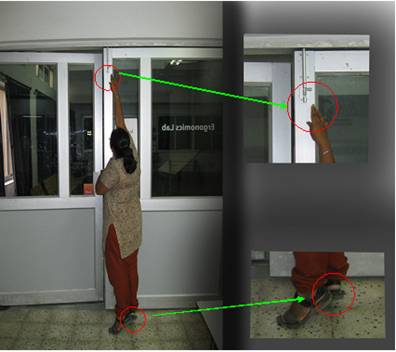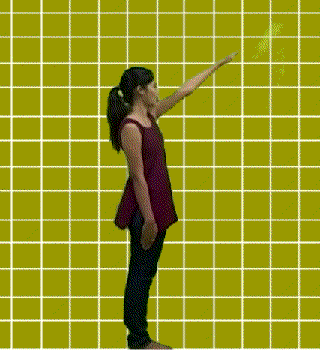Shakshat Virtual Lab 
INDIAN INSTITUTE OF TECHNOLOGY GUWAHATI
|
|
Arm forward reaches,
|
|
|
This Study aims at understanding the various arm reach values in standing posture it also involves measuring techniques and equipment used and to maintained and measurements of |
body parts in such positions should be taken with extension and flexing movements so that various reach values in different positions are normally taken care of. |
|
|
The presentation acquaints
|
 |
|
|
With various movements taken into consideration in different adopted postures which the work context demands are known as dynamic anthropometry. |
Reach anthropometry is required mainly while designing. The human body is not rigid but rather always dynamic. Even in sleep it has movement. The dimensional measurements of the human body. |
|
 |
||
Procedure |
||
|
In the case of dynamic body dimensional measurements, as the body functional contexts vary, comfortable work postures should be maintained and measurements of body part |
in such positions should be taken with extension and flexing movements so that various reach values in different positions are normally taken care of. |
|
|
Measuring procedure |
Direct and indirect body measuring |
|
|
Both direct and indirect measuring procedures are followed to collect anthropometric data from selected subjects in a particular population |
procedures may be considered separately or taken both simultaneously, depending on the context of the dimensional requirement and the suitability of the study. |
|
Step by step procedure
|
||
|
The measuring methods as demonstrated in the video and illustrations presented herein may be followed with the relevant experimental set up using (A) anthropometer set (e.g., rods marked in part millimeter scale are joined together to make a single scale from 0 to 200 cm and using various sliding branches), (B) anthropometric |
board and other relevant devices specifically developed for suitability to measure respective measurements. |
|
|
Direct methods |
||
|
 |
|
| Antropometric board | ||
Indirect methods |
||
|
Indirect measurements may be taken through photographic methods, using still photography and filming the whole body and/or parts from different angles against a marked grid background, or superimposition of a grid on the photographed human body. To guard against parallax errors – problems where the actual dimensions may change - much care must be
|
taken. For dynamic measurements, subjects are asked to perform the intended tasks in actual and/or simulate situations and the relevant measurements are taken. Subjects may leave some marks denoting the limits to which they can stretch their limbs in a comfortable position. Different types of grids are also used to measure these marks. |
|